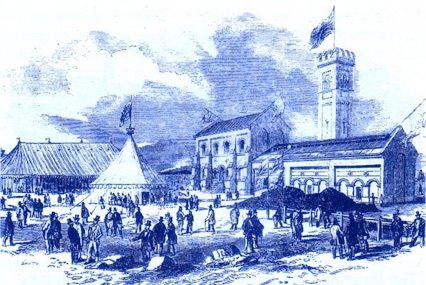In the 19th century, a deadly disease known as cholera wreaked havoc across the globe, claiming countless lives and leaving communities in despair. But amidst the chaos, a determined physician named Dr. John Snow emerged, challenging the prevailing beliefs of the medical establishment and uncovering the true culprit behind the spread of cholera: contaminated water. This article delves into the fascinating chronicles of Dr. John Snow’s battle against the medical establishment, shedding light on his groundbreaking discoveries and the lasting impact they had on public health.
The Cholera Epidemic
Cholera, a highly infectious and often fatal disease, was a recurring nightmare during the 19th century. It spread rapidly through communities, causing severe dehydration, vomiting, and diarrhea. At the time, the medical community believed that cholera was transmitted through miasma, or foul-smelling air. This prevailing theory led to misguided attempts at controlling the disease, such as fumigation and quarantine measures.
The Rise of Dr. John Snow
Amidst the chaos and devastation caused by cholera, Dr. John Snow, a London-based physician, began to question the prevailing beliefs about the disease’s transmission. Through meticulous research and observation, he noticed a peculiar pattern: cholera cases were concentrated around certain water sources, particularly the Broad Street pump in Soho, London.
The Broad Street Pump Outbreak
Driven by his curiosity, Dr. John Snow embarked on a mission to investigate the Broad Street pump outbreak of 1854. He meticulously mapped out all the cholera cases in the area, creating a visual representation that highlighted the concentration of cases near the pump. This groundbreaking approach challenged the prevailing miasma theory and pointed towards a different culprit: contaminated water.
The Power of Data and Observation
Dr. John Snow’s meticulous data collection and observation techniques played a pivotal role in unraveling the true cause of the cholera outbreak. By interviewing affected individuals and analyzing their water sources, he was able to establish a direct link between contaminated water and the spread of cholera. His findings were groundbreaking and challenged the medical establishment’s deeply ingrained beliefs.
The Battle Against the Medical Establishment
Dr. John Snow faced significant opposition from the medical establishment, which staunchly defended the miasma theory. They dismissed his findings as inconclusive and refused to acknowledge the role of contaminated water in the spread of cholera. However, Dr. Snow’s determination and unwavering belief in his research compelled him to continue his fight.
The Removal of the Broad Street Pump Handle
In a bold move that would forever change the course of public health, Dr. John Snow convinced local authorities to remove the handle of the Broad Street pump, effectively cutting off the source of contaminated water. Almost immediately, the outbreak subsided, providing tangible evidence of his theory and reinforcing the importance of clean water in preventing the spread of cholera.
Legacy and Impact
Dr. John Snow’s work revolutionized the field of epidemiology and established him as a pioneer in public health. His findings paved the way for further research into waterborne diseases and led to significant improvements in sanitation and water supply systems. The removal of the Broad Street pump handle stands as a powerful symbol of the triumph of evidence-based medicine over prevailing beliefs.
Conclusion
Dr. John Snow’s battle against the medical establishment to prove water as the culprit behind the spread of cholera was a turning point in the history of public health. His meticulous research, unwavering determination, and groundbreaking findings challenged long-standing beliefs and laid the foundation for modern epidemiology. The removal of the Broad Street pump handle serves as a powerful reminder of the importance of clean water in preventing the spread of diseases. Dr. John Snow’s legacy continues to inspire researchers and healthcare professionals to question established norms and seek the truth for the betterment of public health.
